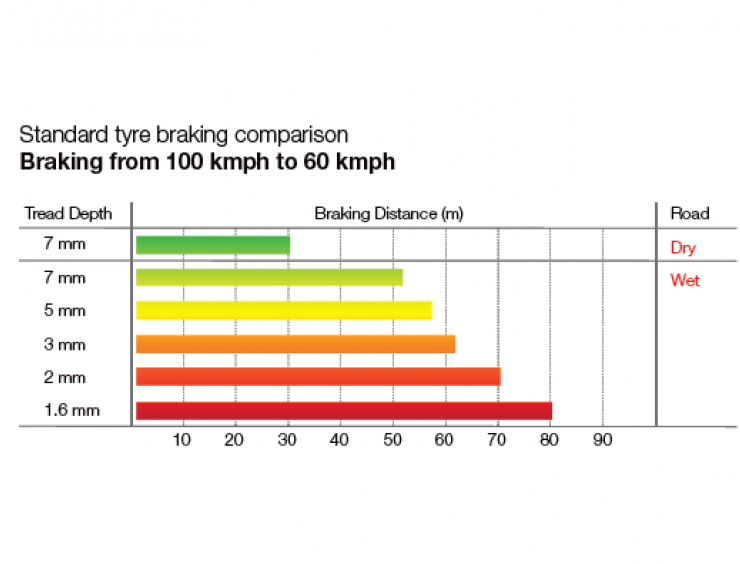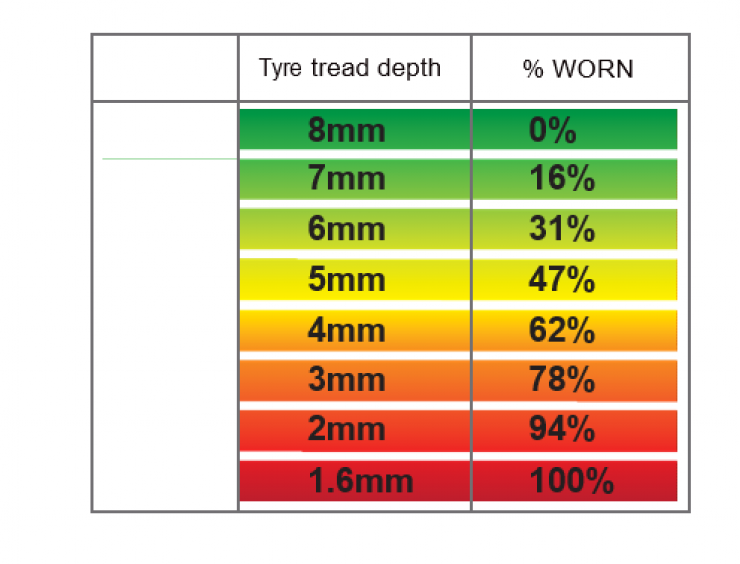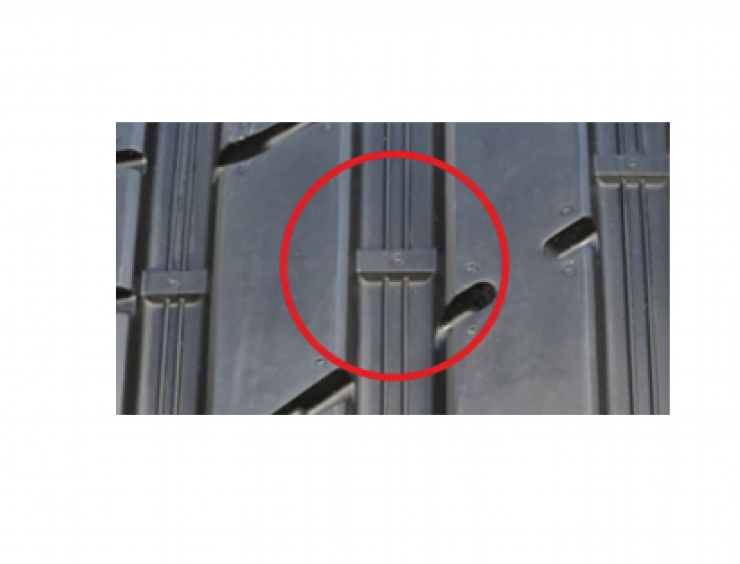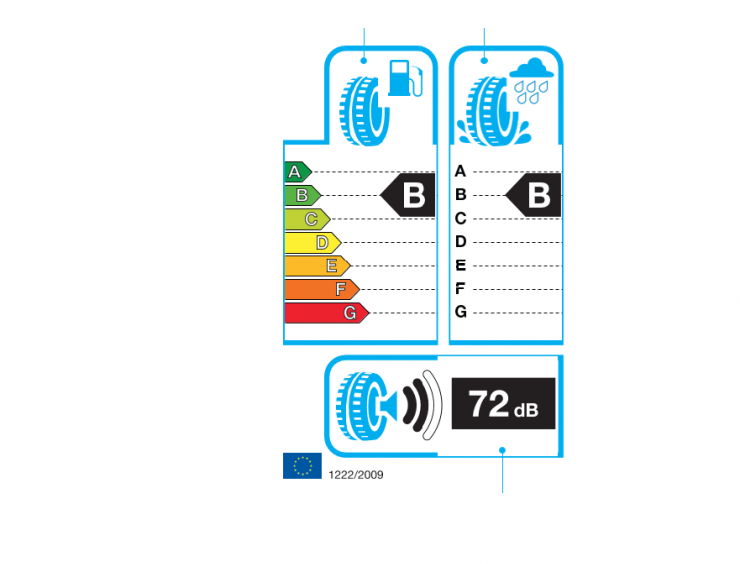How the tyre tread depth affects braking distances!!!
This graph shows that the greater the tread depth on the tyre the quicker the stopping distance in the WET...


How worn are your tyres?
The higher the percentage the less tyre tread you have remaining...
All New Tyres are supplied with a 'tread wear indicator' in the tyre tread
The 'tread wear indicator' block is set into the tyre at depth of 1.6mm which is the legal limit by law.
In order to stay within the 'law' you should check that this 'tread wear indicator' block is not at the same level as or lower than the tyre tread. If your are stopped and your tyres are under the legal limit this could result in a 'Fine and 3 Points per Tyre on your Driving Licence'.


-
Fuel Efficiency Class
7 classes from G (least efficient) to A (most efficient).
Effect may vary among vehicles and driving conditions, but the difference between a G and an A class for a complete set of tyres could reduce fuel consumption by up to 7.5%* and even more in the case of trucks.
-
Wet Grip Class
7 classes from G (longest braking distance) to A (shortest braking distances).
Effect may vary among vehicles and driving conditions, but in the case of full braking, the difference between a G and an A class for the set of four identical tyres could be up to 30% shorter braking distance (e.g for a typical passenger car driving at 80 kmh speed this could be up to 18m shorter braking distance)*.
-
Tyre External Rolling Noise Class
In addition to the noise value in decibel dB(A) a pictogram displays whether the tyre external rolling noise performance is above the future European mandatory limit value (3 black bars = noisier tyre), between the future limit value and 3 dB below (2 black bars = average tyre) or more than 3 dB below the future limit value (1 black bar = low noise tyre).